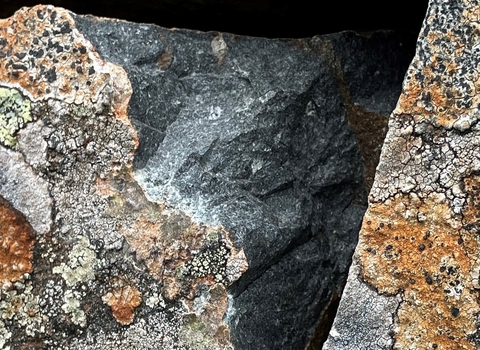What is a volcanic rocks?
They were once molten and were expelled from inside the Earth onto its surface. There are many different types, some are lavas which flowed and some were once volcanic ash and explosive debris.
How do I recognize it?
In Northumberland volcanic rocks are usually hard dark grey rocks mostly with small minerals you can’t see with the naked eye but mixed in with them are larger minerals – called phenocrysts. Normally volcanic lavas have no layers like sedimentary rocks. Rocks that were once volcanic ash and explosive debris have many compacted rock particles of different sizes and may appear to be layered (banded).
Where do I find it?
The best places in Northumberland are in the Cheviot hills, particularly in the little cliffs and sections beside rivers and streams. The volcanic rocks here are Devonian in age – that’s about 400 million years ago. There are younger, Carboniferous, lavas near Carter Bar on the A68.
How was it made?
They were once molten rock at temperatures between 800 and 1200 degrees. After they erupted they cooled and the minerals of silica, magnesium, iron, potassium and calcium crystallised.
What does a volcanic rock landscape look like?
In our region the volcanic rocks are very old and have been worn down a lot. But they are still very hard rocks that have eroded only slowly and so we usually find volcanic rocks in hilly or mountainous areas.
Which plants like volcanic rocks?
Our Cheviot volcanic lavas are locally quite rich in calcium, so that lime-loving plants like hairy rock-cress and quaking grass occur on rocky outcrops by the river.
What use is it?
Because they are very hard lavas are often quarried for roadstone.

